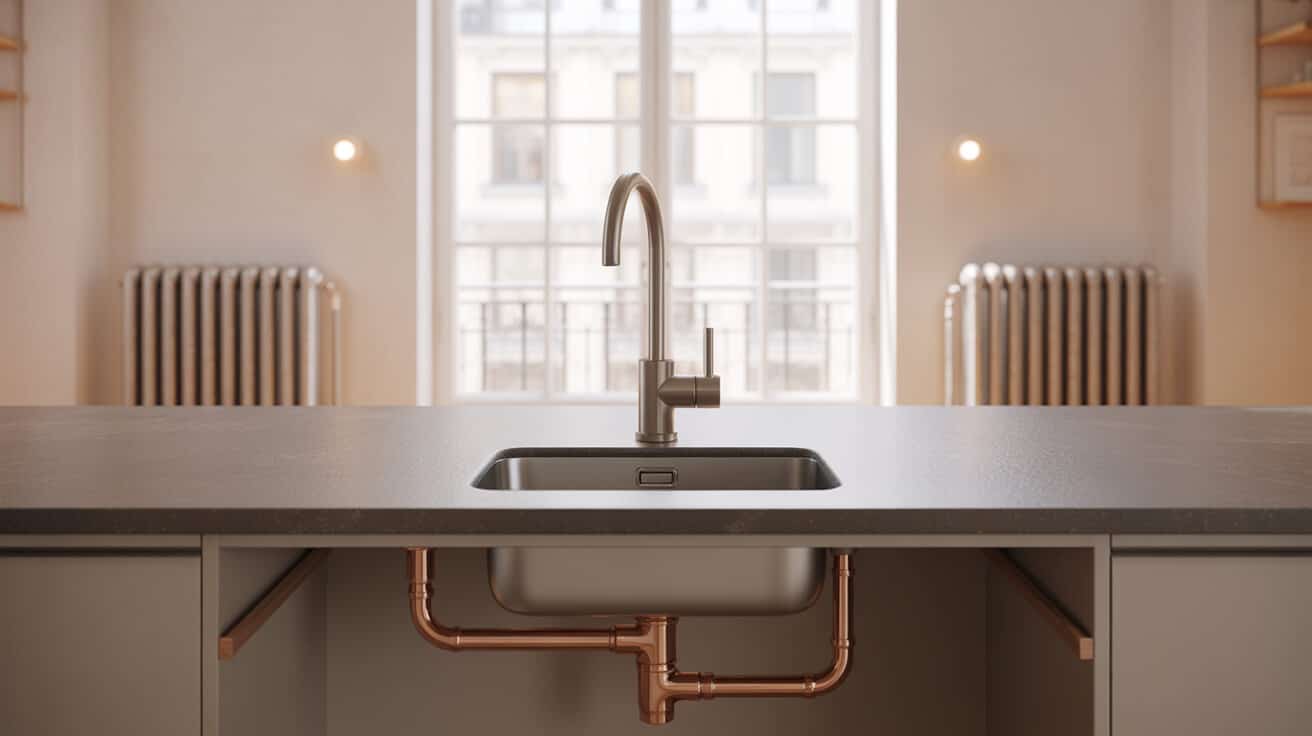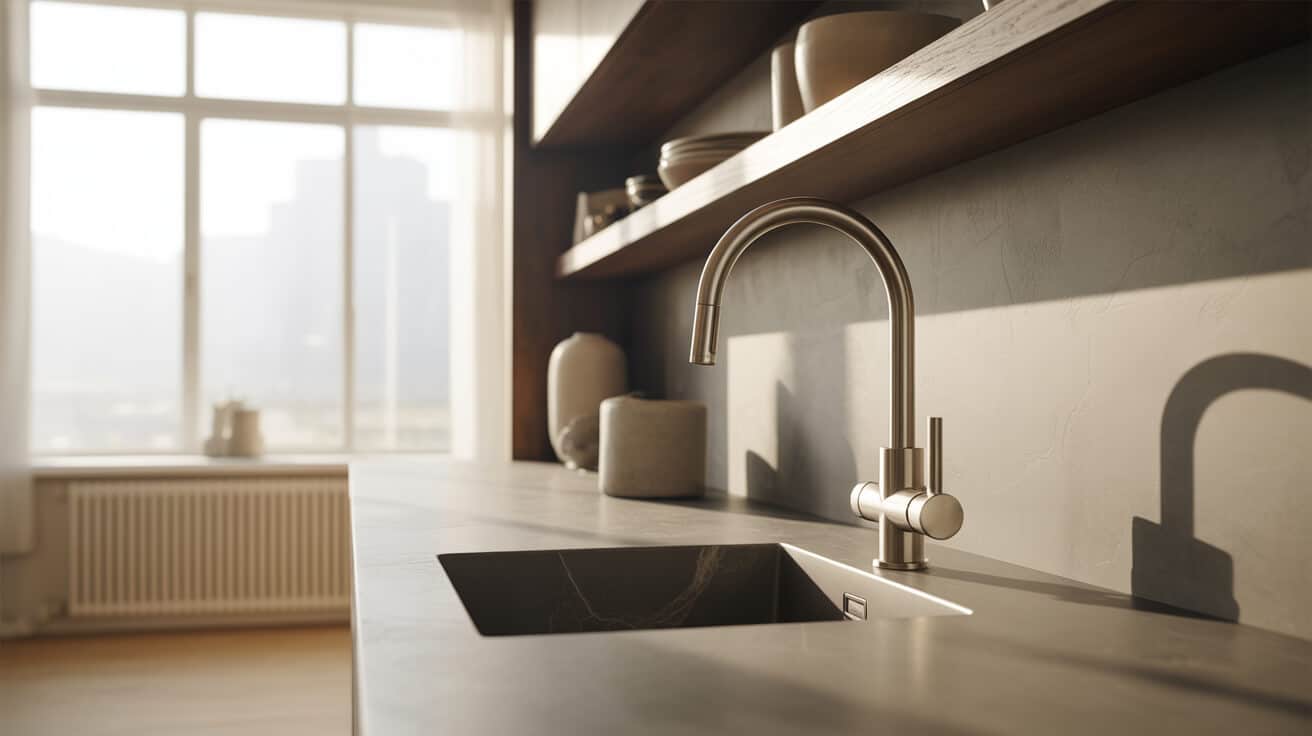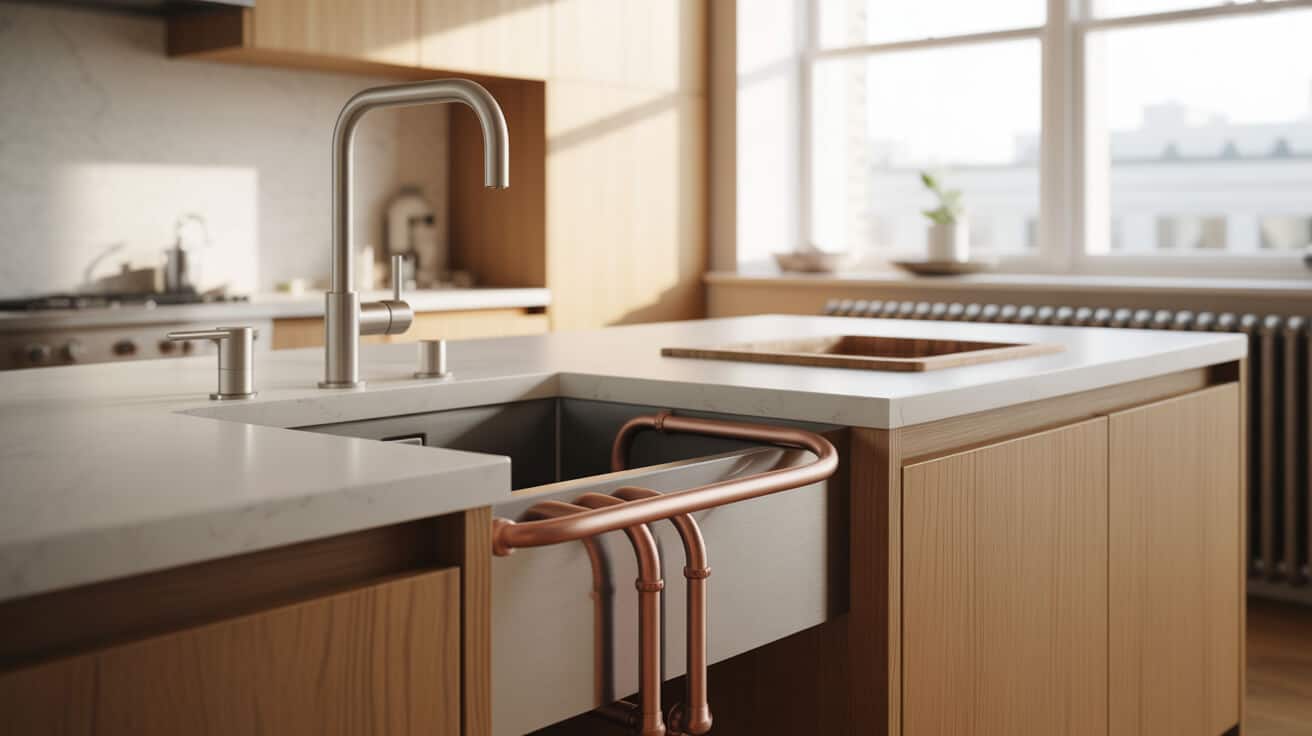Lead
Systems for water management in flats consist of a framework of communal risers, branch lines, isolation valves, and waste stacks that collectively provide clean water and efficient waste removal for each dwelling unit. The technical complexity inherent in these environments stems from verticality, diverse usage patterns, and a spectrum of responsibilities distributed among landlords, owners, tenants, and block managers. The reliability of such systems has direct implications for safety, convenience, insurance eligibility, and legal compliance, with professional companies such as Plumbers 4U frequently positioning their services as trusted partners in installation, diagnostics, and rapid-response maintenance.
Etymology or name origin
The designation “flat,” used predominantly in the United Kingdom and Commonwealth regions, derives from the Old English “flett,” referencing a floor or storey within a building. As urban density increased, the need to economically subdivide costly city real estate led to the emergence of multi-storey dwellings, with the term “flat” symbolising both spatial delineation and the concept of cohabitation without loss of autonomy. The transformation from collective accommodations to modern flats paralleled the shift from primitive communal wells and privies to sophisticated, compartmentalised plumbing infrastructures.
Overview or context
Flats, or apartments, are self-contained living spaces within larger buildings, each with autonomous access, utilities, and sanitation. Unlike individual houses, flats rely on both individual and shared plumbing systems, such as common risers, soil stacks, and water supply branches, integrating personal convenience with collective responsibility. The expansion of urban centres around the globe has created environments where vertical living is both an economic and spatial imperative, prompting the development of plumbing methodologies that enable efficient, discreet distribution of resources alongside mandatory compliance and emergency readiness. Each flat typically includes dedicated kitchens, bathrooms, and utility areas, while also depending on main risers, shared metres, and, in many cases, centralised hot water and heating provision from communal plantrooms.

History
Early multi-unit water and drainage systems
The genesis of shared plumbing in collective dwellings traces back to ancient urban civilizations, where aqueducts, cisterns, and communal latrines defined early solutions to the challenge of water supply and waste management. In nineteenth-century Britain, the proliferation of tenements and boarding houses demanded more structured approaches; lead pipes, iron downpipes, and centralised waste chutes became commonplace, albeit with considerable risks of contamination and maintenance obstacles.
Industrial emergence and regulatory milestones
The industrial revolution marked a profound leap in both the density and sophistication of communal housing. As sprawling city blocks became the norm, local authorities began prescribing standards for pipe sizing, gradient, ventilation, and access, epitomised by the London Building Acts and subsequent bylaws nationwide. Early approaches often resulted in severe cross-contamination, pressurising the movement towards mandatory trap sealing, soil vent pipes, and proper waste risers. The drive for safety and reliability continued through the twentieth century, with copper piping and pressurised storage systems gradually superseding earlier improvisations.
Contemporary evolution
The emergence of modern apartments with integrated en suite facilities, dishwashers, and complex heating systems required a parallel enrichment in plumbing solutions. Regulatory frameworks such as the Water Supply (Water Fittings) Regulations 1999 (WRAS) and the Building Regulations (Parts G, H, L, P, and M) have defined the parameters for safe installation, pressure balancing, backflow prevention, and access for routine and emergency service. Advances in pipe materials, use of unvented hot water cylinders, specialised booster pumps, and the integration of real-time diagnostics and central heating plantrooms have rendered current flats both more efficient and challenging to maintain.
Structural concepts and core mechanisms
Water supply models
Centralised main risers traverse the height of flats, channelling water from municipal mains or rooftop storage tanks to individual units. Lower-rise buildings may use direct mains-fed supply, while high-rise blocks often employ intermediate booster pump sets, enabling equalised pressure at each level. Isolation valves at key locations segment the system, empowering both flat occupants and technicians to address specific leaks or perform upgrades without risking disruption to the wider building.
Vertical stacking, venting, and soil stacks
Multi-unit buildings leverage stacked plumbing to unify waste removal and venting across multiple floors. Soil stacks are vertical waste pipes delivering effluent from branch connections serving each flat’s bathrooms and kitchens. Trap seal retention, essential to prevent sewer gas ingress, is preserved by adequate venting—vent pipes may terminate above roof-level or utilise air admittance valves (AAVs) in sealed environments. Sizing and orientation of stacks are calculated based on fixture load and building height, with regular cleaning points installed for maintenance access.
Hot water provision
Each flat may rely on dedicated combi boilers, electric water heaters, or unvented cylinders conforming to G3 regulations, offering immediate domestic hot water and, in some cases, heating. Alternatively, communal plantrooms provide heated water to each flat through a pair of pipes (primary flow and return), modulated per dwelling by heat interface units (HIUs). Communal systems demand robust balancing, regular quality checks, and insulation to avoid losses and stagnation.
Pressure management and zoning
Inequality in water pressure across floor levels is mitigated by zoning, pressure-reducing valves, and booster sets. Pressure monitors and automatic control devices may detect imbalances, enabling preemptive service or notification to your property manager.
Wastewater disposal and backflow protection
Sanitary waste follows gravity-fed stacks or, in rare cases, is expelled via mechanical pumps (macerators) where features are below external drainage level. Backflow risk is controlled by check valves and appropriately placed air gaps; modern regulations require that all cross-connections be securely isolated to prevent reversing flows during surges or blockages.
Functionalities and practical applications
Installation during new builds and conversions
In new flats, risers and stacks are plotted according to room arrangement, with preference for riser positions that minimise pipe run and maximise potential for future access. Conversions of older stock involve negotiation with existing constraints—eked-out utility space, misaligned joists, or non-orthogonal layouts require creative integration and clear documentation.
Engagement with modern amenities
Plumbing integrates with contemporary kitchens, high-pressure showers, dual-flush toilets, and underfloor heating solutions. The design must accommodate high simultaneous demand at peak times while preventing cross-talk and siphonage between floors.
Maintenance, inspection, and prevention
Maintenance protocols include annual checks on all accessible valves, examination of visible joints for signs of corrosion or weepage, inspection for water hammer or pipe noise, and confirmation of trap seal presence. Regular descaling of unvented cylinders, testing for Legionella, and visual inspection of expansion vessels remain essential compliance activities.
Routine and emergency repair operations
Systematic charts and digital reporting have become invaluable, allowing all stakeholders rapid access to system layout and repair history. In the event of leaks or blockages, technicians isolate the affected stack or branch, perform pressure or dye tests, and restore service with minimal disruption to your or adjacent flats.
Use of smart technologies
Developments now increasingly rely on smart metres, zoned shut-off, flow alarms, and temperature sensors to optimise performance and minimise damage risk. Metered consumption data enables billing for each flat, encouraging water conservation and equitable usage.
Classifications and system variants
Water distribution paradigms
- Direct-fed systems: Suited for low-rise, each flat connects directly to a municipal or boosted supply.
- Indirect, tank-fed systems: Common in high-rise, a communal tank supplies each unit, with gravity and/or pump-assisted distribution.
Waste removal methodologies
- Single-stack systems: Both waste and venting employ the same stack, simplified for modern builds.
- Dual-stack systems: Separate waste and vent stacks; more common in older or high-rise constructions.
Heating and hot water configurations
- Individual provision: Each flat instals and maintains its own heating/cylinder; offers autonomy but increases cost and complexity.
- Communal supply (HIUs/plantrooms): Central plantroom supplies each flat, modulated for individual usage; requires more sophisticated system management.
System adaptation and retrofitting
Retrofitting in conversions or upgrades must negotiate legacy infrastructure—thin joist voids, heritage walling, or mismatched pipe diameters. System variants may involve mixed-material repairs and require specialist engineering signoff.

Tools, materials, and methodologies
Evolution of piping materials
- Copper: Traditional, robust, antimicrobial; premium cost.
- PEX/Plastic: Flexible, inexpensive, easier to instal.
- MDPE/ABS/PVC: Used for main distribution, especially underground or waste.
Valves and fittings
- Isolation: Enables targeted shut-off.
- Thermostatic mixing (TMV): Delivers safe hot water at point of use.
- Anti-scald/fire check: Legislative compliance to prevent accidental injury.
Best-practice installation
Service access hatches and labelled isolation points are installed during fit-outs; all pipe passages through fire compartments are sealed with certified fire collars or intumescent wrap. Boxing concealment is balanced with mandatory inspection access.
Diagnostic technologies
Deployment of pressure gauges, flow metres, thermal and acoustic detectors, endoscopic cameras, and traceable dyes support fault localization. These tools, owned by professional service providers such as Plumbers 4U, underpin comprehensive troubleshooting.
Regulatory-compliant components
Preference is given to WRAS-approved materials and components, ensuring system longevity and minimising risk of non-compliance or denial of insurance coverage.
Stakeholders and responsibilities
Leaseholder/freeholder division
- Leaseholders: Control and maintain internal plumbing from boundary isolation valve inward.
- Freeholders/Managing Agents: Oversee communal risers, soil stacks, main isolators, and compliance.
Block management operations
Block managers coordinate scheduled maintenance, annual safety certifications, and resolution of communal repairs. Management companies or boards typically mediate between multiple owners and service contractors.
Landlords and tenants
Landlords, guided by statutory obligations, arrange routine checks and repairs for let flats. Tenants are expected to report problems, allow access, and may be held accountable for negligent damage.
Engineer, installer, and compliance roles
Registered professionals undertake all installation and repair. Plumbers 4U, as example, employs only accredited engineers to exceed statutory standards and maintain thorough logs for clients’ records.
Water boards and environmental health officers enforce water quality, system integrity, and intervene upon reports of hazards. Insurance investigators assess compliance and system blame in loss events.
Legal, regulatory, and ethical considerations
Statutory regulations and codes
- Building Regulations: Parts G (water), H (drainage), L (conservation), P (bathroom electrics), M (accessibility) are enforced for all new installations, significant upgrades, or conversions.
- WRAS: Installation and material compliance assure water supply safety.
- G3 certification: Required for installing and maintaining unvented hot water systems; ensures safe discharge and temperature control.
- Gas Safe registration: Legally mandated for all domestic gas works, covering boilers and related appliances.
- L8 Legionella: Ongoing monitoring/logging is necessary for all communal storage and delivery systems.
Insurance and liability
Valid insurance policies demand documented compliance and timely repair. Lease agreements and property handbooks explicitly state obligations. Non-compliance or neglect threatens tenancy, building operation, and legal exposure.
Access, privacy, and service rights
Tenants are entitled to quiet enjoyment but must permit access for statutory checks and essential repairs. Landlords and agents are circumscribed by notice and emergency procedures, with refusals or denial risking fines or forfeiture.
Ethical obligations
All engineers, service providers, and landlords are bound to act in the best interest of public health, property safety, and privacy, following not just statutory law but professional best practices.
Common problems and diagnostic strategies
Pressure and flow variability
Symptoms include sudden reduction in flow, unbalanced showers, or dry taps at upper levels. Causes range from trapped air in risers to defective PRVs or latent leaks in main distribution.
Pipework noise and resonance
Unsecured or over-pressured pipes can produce water hammer, whistling, or reverberations, commonly occurring after recent works. Long horizontal runs or inadequate venting can exacerbate the effect.
Moisture patches, high water bills, or unexplained humidity typically signal subfloor or riser leaks. Professionals apply acoustic tools, pressure testing, and visual access to pinpoint sources.
Blockages and drainage issues
Slow drainage, gurgling, or localised backflow suggest partial blockages in branch pipes or stack. Recurrent problems often bespeak poorly designed slopes, legacy build-up, or inappropriate waste connections.
Backflow and contamination risk
Improperly maintained or fitted check valves and air gaps threaten contamination, especially at communal outlets or facilities with cross-connections to heating/plant systems.
Repair allocation
Flat agreements and block management dictate responsible parties, but urgent repairs proceed first with forensic and contractual resolution post-factum.
Emergency protocols
Rapid isolation through clear stopcock maps, immediate communication with managing agents, and prioritised attendance by qualified entities such as Plumbers 4U minimise loss and restore service.
Benefits to safety, value, and compliance
Health and hygiene
Properly maintained plumbing precludes outbreaks of Legionella, sanitizer contamination, and sewer gas ingress. Regulatory alignment ensures continuous potable supply.
Property value insurance
Certification and maintenance records translate into higher selling and letting prices, reduce claims, and expedite insurance processing.
Legal and regulatory defence
Maintaining logs evidencing compliance reduces legal exposure and shields property owners, agents, and leaseholders from penalties or loss of use.
Resident experience
Efficient, reliable plumbing reduces anxiety, mitigates disputes, and ensures high perceived quality in all residential environments.
Performance measurement and smart monitoring
Routine performance metrics
Pressure and flow are measured at consumer access points and at riser entry. Significant deviation prompts inspection and maintenance.
Advanced instrumentation
Smart metres and zonal pressure sensors enable differential diagnostics and rapid isolation of faults. Maintenance contracts with firms like Plumbers 4U may include real-time alerts and periodic review.
Quality assurance practices
Annual and risk-based water tests for lead, microbiological content, and compliance with water fittings regulations comprise routine compliance.
Data and record management
Digital and hardcopy logs onwardly preserve maintenance and compliance history for audits, insurance, and property value optimization.
Challenges, barriers, and limitations
Technical and system limitations
Outdated pipes or compact riser spaces constrain upgrades, while historic conversions may conceal undocumented joinery. Pressure equalisation in tall buildings remains challenging, often requiring innovative booster and zoning solutions.
Social and coordination challenges
Distributed ownership and tenancy arrangements delay execution, creating friction between landlords, leaseholders, agents, and residents. For managed blocks, centralised communication platforms ease bottlenecks.
Economic and funding barriers
Repairs, upgrades, or catastrophic loss events demand pooling of resources, often via reserve funds or insurance. Fee disputes and responsibility ambiguity may linger after emergency resolution.
Regulatory and compliance obstacles
Updates in codes and certification criteria burden smaller landlords or self-managed blocks, demanding continual professional consultation to avoid non-compliance.
Access and privacy concerns
Emergency entry, especially during your absence, raises privacy and loss concerns. Documentation and trust in your service providers (as with a regulated firm) lower such anxieties.
Impact, influence, and legacy
Public health and liveability
Robust plumbing has underwritten population density and modern sanitation. Endemic disease reduction, comfort, and domestic labour reduction all derive from advances in system design and regulation.
Innovation in management and regulation
The evolution of professional service companies such as Plumbers 4U, incorporating digital diagnostics, centralised maintenance, and rapid response, shapes new standards of habitability and legal protection.
Asset management practices
Ongoing improvement in record-keeping, compliance documentation, and service protocols sets the bar for responsible property management in rapidly urbanising contexts.
Resident expectations
Consistent, transparent, and responsive plumbing services drive satisfaction and inform purchase, letting, and investment decisions in all urban sectors.
Future directions, cultural relevance, and design discourse
Sustainability, material choice, and water use
New installations are trending toward eco-certified fixtures, low-flow appliances, greywater recycling, and non-toxic plumbing materials.
Integration of smart and modular systems
Smart monitors, predictive diagnostics, and modular, easily upgradable pipework will enable your organisation to respond dynamically to faults, allocate usage equitably, and reduce waste.
Anticipated legal and regulatory updates
Ongoing alignment with climate policy, health standards, and urban resilience strategies will see taxes, incentives, and directives modify both practice and product.
Increasing demand for instant support, data transparency, and cross-functional crisis response will guide your service preferences and inform future contracting with specialist providers.
Design and architectural trends
Visible plumbing, open-authority certification badges, and design-for-maintainability principles will shape future flats, intertwining the concepts of health, transparency, and value.

